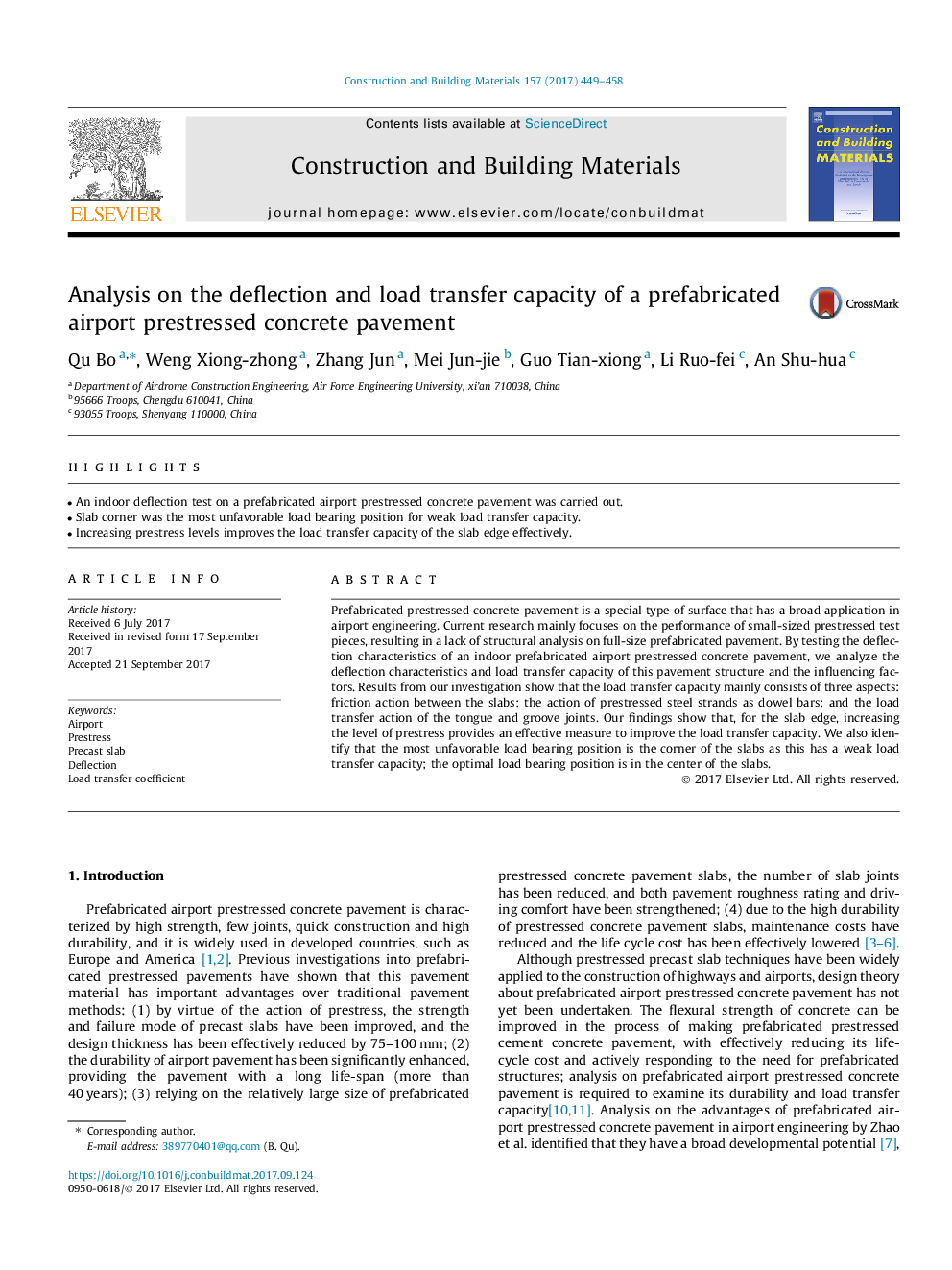| کد مقاله | کد نشریه | سال انتشار | مقاله انگلیسی | نسخه تمام متن |
|---|---|---|---|---|
| 4912887 | 1428749 | 2017 | 10 صفحه PDF | دانلود رایگان |
عنوان انگلیسی مقاله ISI
Analysis on the deflection and load transfer capacity of a prefabricated airport prestressed concrete pavement
ترجمه فارسی عنوان
تجزیه و تحلیل ظرفیت انحراف و انتقال بار یک روکش بتن پیش ساخته شده از فرودگاه پیش ساخته
دانلود مقاله + سفارش ترجمه
دانلود مقاله ISI انگلیسی
رایگان برای ایرانیان
کلمات کلیدی
فرودگاه، پیش پا افتاده، اسلب پیش ساخته، انحراف، ضریب انتقال بار،
ترجمه چکیده
روسازی پیش ساخته بتنی نوع خاصی از سطح است که کاربرد وسیع در مهندسی فرودگاه دارد. تحقیقات کنونی عمدتا بر عملکرد تست های پیش آزمون شده کوچک اندازه تمرکز کرده و منجر به عدم تجزیه و تحلیل ساختاری بر روی سنگ فرش های کامل پیش ساخته شده می شود. با تست ویژگی های انحراف از یک روکش بتن پیش ساخته بتنی ساختمان پیش ساخته، ما ویژگی های انحراف و ظرفیت انتقال بار این ساخت و ساز روان شناسی و عوامل موثر را تحلیل می کنیم. نتایج تحقیقات ما نشان می دهد که ظرفیت انتقال بار عمدتا شامل سه جنبه است: عمل اصطکاک بین اسلب ها؛ عمل رشته های فولاد پیش ساخته شده به عنوان میله های رول؛ و عمل انتقال بار زبان و مفاصل شیار. یافته های ما نشان می دهد که برای لبه های تخته ای، افزایش سطح پیش بندگی یک اقدام موثر برای بهبود ظرفیت انتقال بار را فراهم می کند. ما همچنین مشخص می کنیم که موقعیت نامناسب باربری، گوشه ای از اسلب ها است زیرا این ظرفیت انتقال بار ضعیف است. موقعیت باربری مطلوب در مرکز اسلب قرار دارد.
موضوعات مرتبط
مهندسی و علوم پایه
سایر رشته های مهندسی
مهندسی عمران و سازه
چکیده انگلیسی
Prefabricated prestressed concrete pavement is a special type of surface that has a broad application in airport engineering. Current research mainly focuses on the performance of small-sized prestressed test pieces, resulting in a lack of structural analysis on full-size prefabricated pavement. By testing the deflection characteristics of an indoor prefabricated airport prestressed concrete pavement, we analyze the deflection characteristics and load transfer capacity of this pavement structure and the influencing factors. Results from our investigation show that the load transfer capacity mainly consists of three aspects: friction action between the slabs; the action of prestressed steel strands as dowel bars; and the load transfer action of the tongue and groove joints. Our findings show that, for the slab edge, increasing the level of prestress provides an effective measure to improve the load transfer capacity. We also identify that the most unfavorable load bearing position is the corner of the slabs as this has a weak load transfer capacity; the optimal load bearing position is in the center of the slabs.
ناشر
Database: Elsevier - ScienceDirect (ساینس دایرکت)
Journal: Construction and Building Materials - Volume 157, 30 December 2017, Pages 449-458
Journal: Construction and Building Materials - Volume 157, 30 December 2017, Pages 449-458
نویسندگان
Qu Bo, Weng Xiong-zhong, Zhang Jun, Mei Jun-jie, Guo Tian-xiong, Li Ruo-fei, An Shu-hua,
